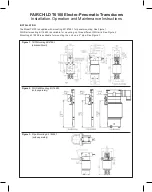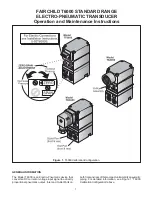
0
200
400
600
800
1000
1200
1400
0
0
.2
0
.4
0
.6
0
.8
1
1
.2
1
.4
1
.6
1
.8
2
2
.2
2
.4
2
.6
2
.8
3
3
.2
3
.4
3
.6
Voltage on PA_EN/LNA_EN pin [V]
C
u
rr
e
n
t
[u
A
]
source current, 3 V
sink current, 3 V
source current, 2.3 V
sink current, 2.3 V
source current, 3.6 V
sink current, 3.6 V
SWRS046H – NOVEMBER 2006 – REVISED MARCH 2015
5.19.3 PA_EN and LNA_EN Pin Drive
shows the PA_EN and LNA_EN pin drive currents. The sink and source currents have
opposite signs but absolute values are used in
.
Figure 5-32. Typical PA_EN and LNA_EN Pin Drive
5.20 System Considerations and Guidelines
5.20.1 SRD Regulations
International regulations and national laws regulate the use of radio receivers and transmitters. SRDs
(Short Range Devices) for license free operation are allowed to operate in the 433 and 868 to 870 MHz
bands in most European countries. In the United States, such devices operate in the 260 to 470 and 902
to 928 MHz bands. CC1020 is also applicable for use in the 950 to 960 MHz frequency band in Japan. A
summary of the most important aspects of these regulations can be found in
AN001 SRD Regulations For
License Free Transceiver Operation
(
5.20.2 Narrowband Systems
CC1020 is specifically designed for narrowband systems complying with ARIB STD-T67 and EN 300 220.
The CC1020 meets the strict requirements to ACP (Adjacent Channel Power) and occupied bandwidth for
a narrowband transmitter. To meet the ARIB STD-T67 requirements, a 3.0 V regulated voltage supply
should be used.
For the receiver side, CC1020 gives very good ACR (Adjacent Channel Rejection), image frequency
suppression and blocking properties for channel spacings down to 12.5 kHz.
Such narrowband performance normally requires the use of external ceramic filters. The CC1020 provides
this performance as a true single-chip solution with integrated IF filters.
Japan and Korea have allocated several frequency bands at 424, 426, 429, 447, 449 and 469 MHz for
narrowband license free operation. CC1020 is designed to meet the requirements for operation in all these
bands, including the strict requirements for narrowband operation down to 12.5 kHz channel spacing.
Due to on-chip complex filtering, the image frequency is removed. An on-chip calibration circuit is used to
get the best possible image rejection. A narrowband preselector filter is not necessary to achieve image
rejection.
58
Detailed Description
Copyright © 2006–2015, Texas Instruments Incorporated
Product Folder Links:
















































